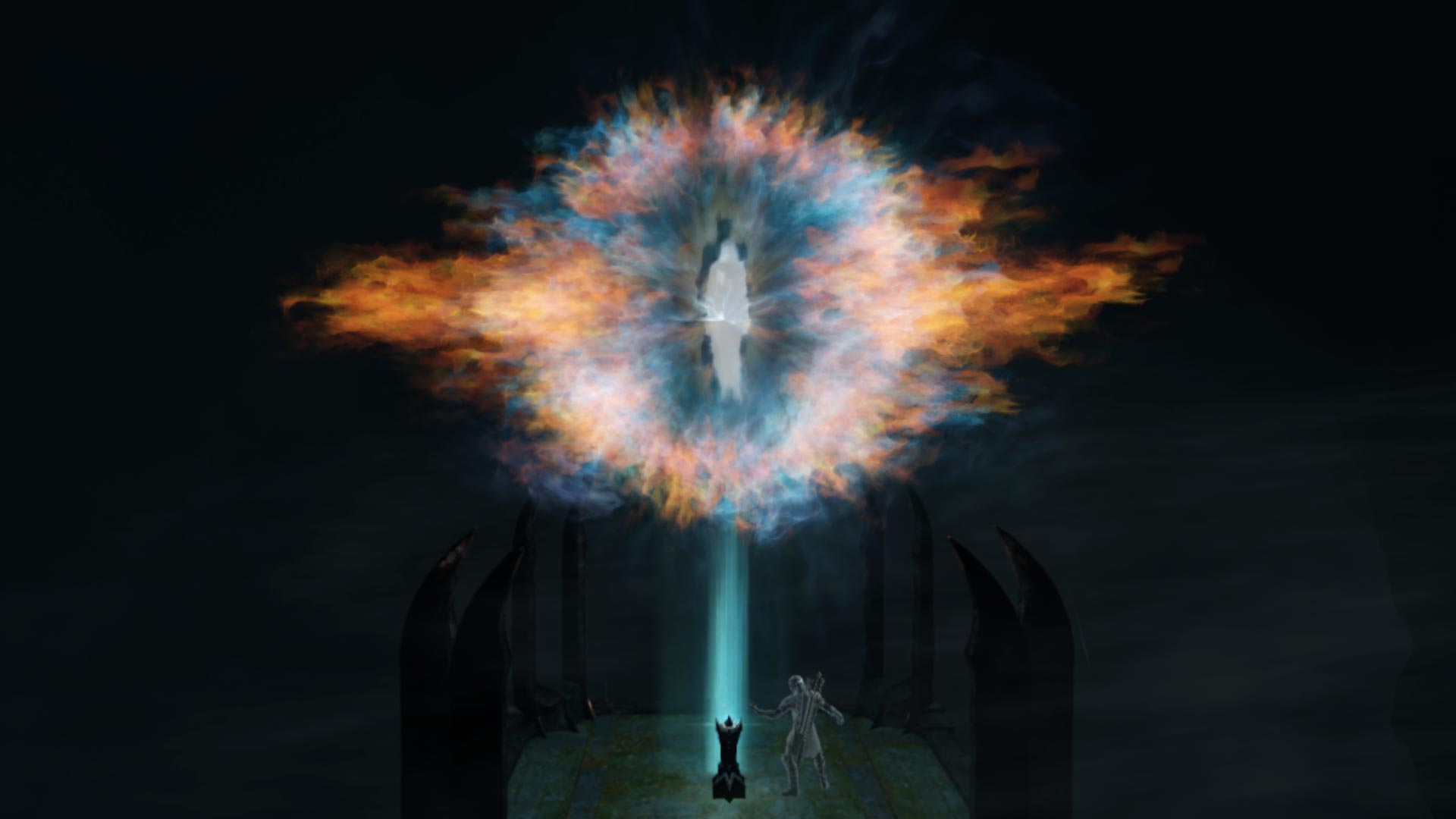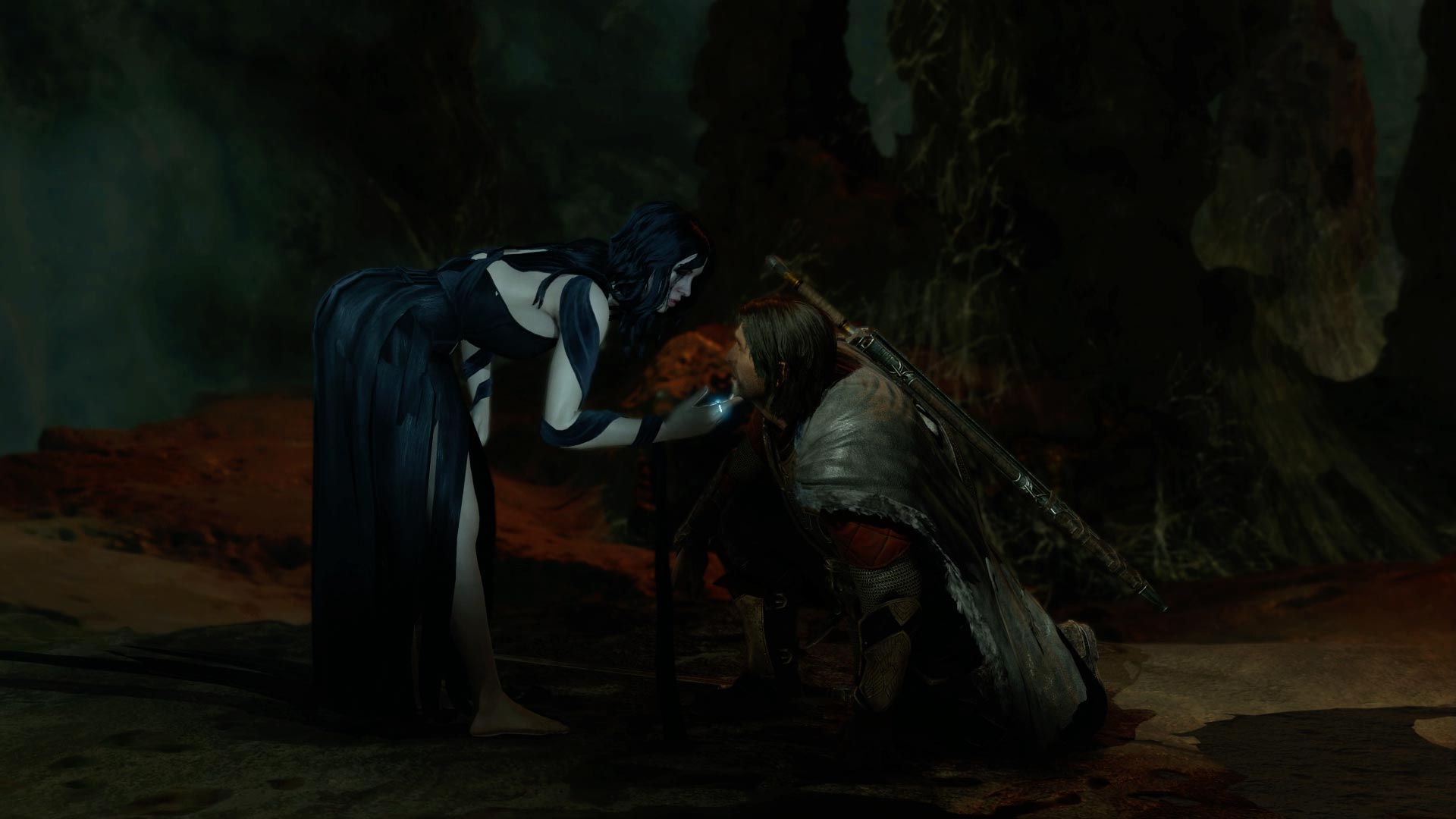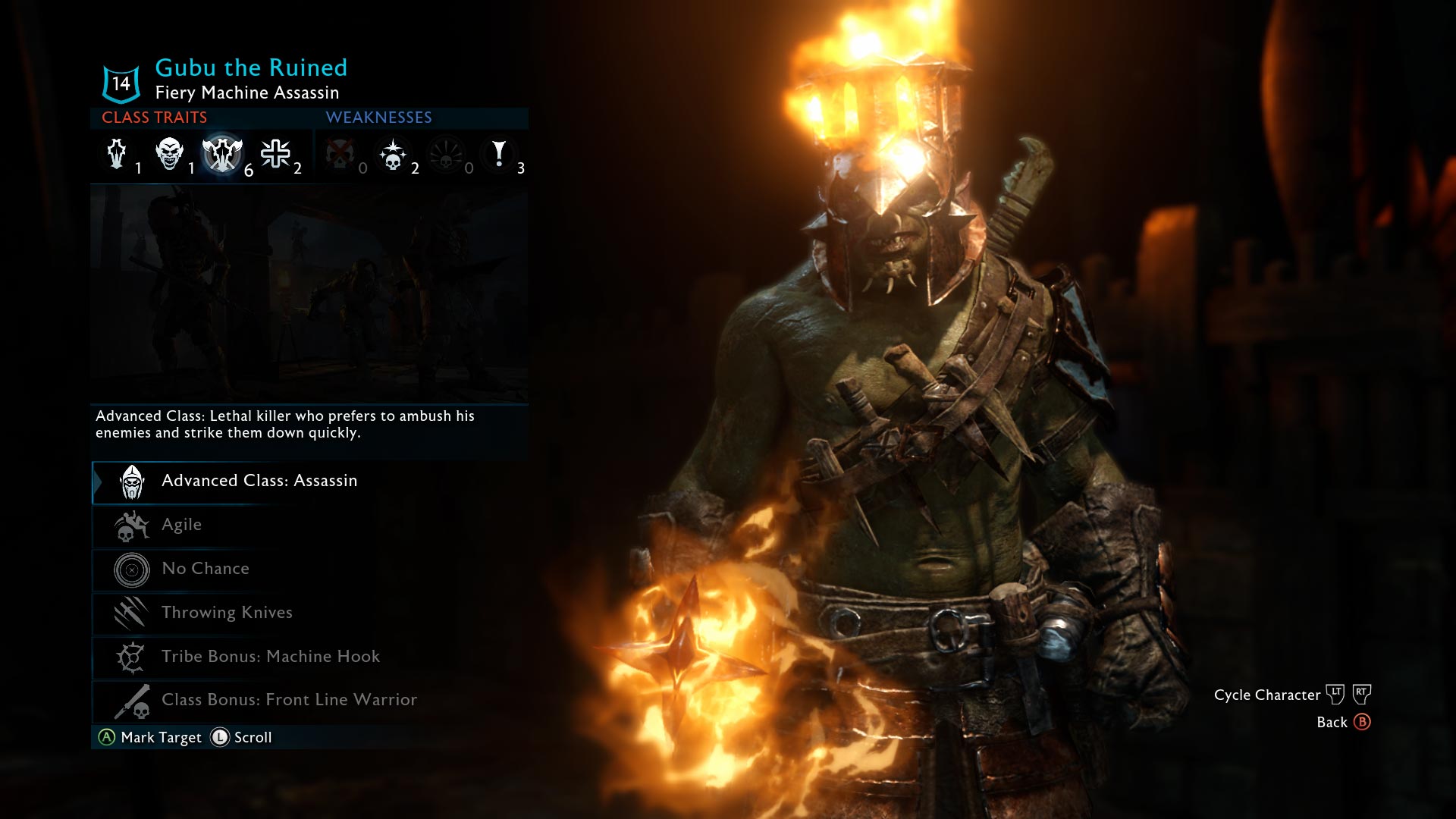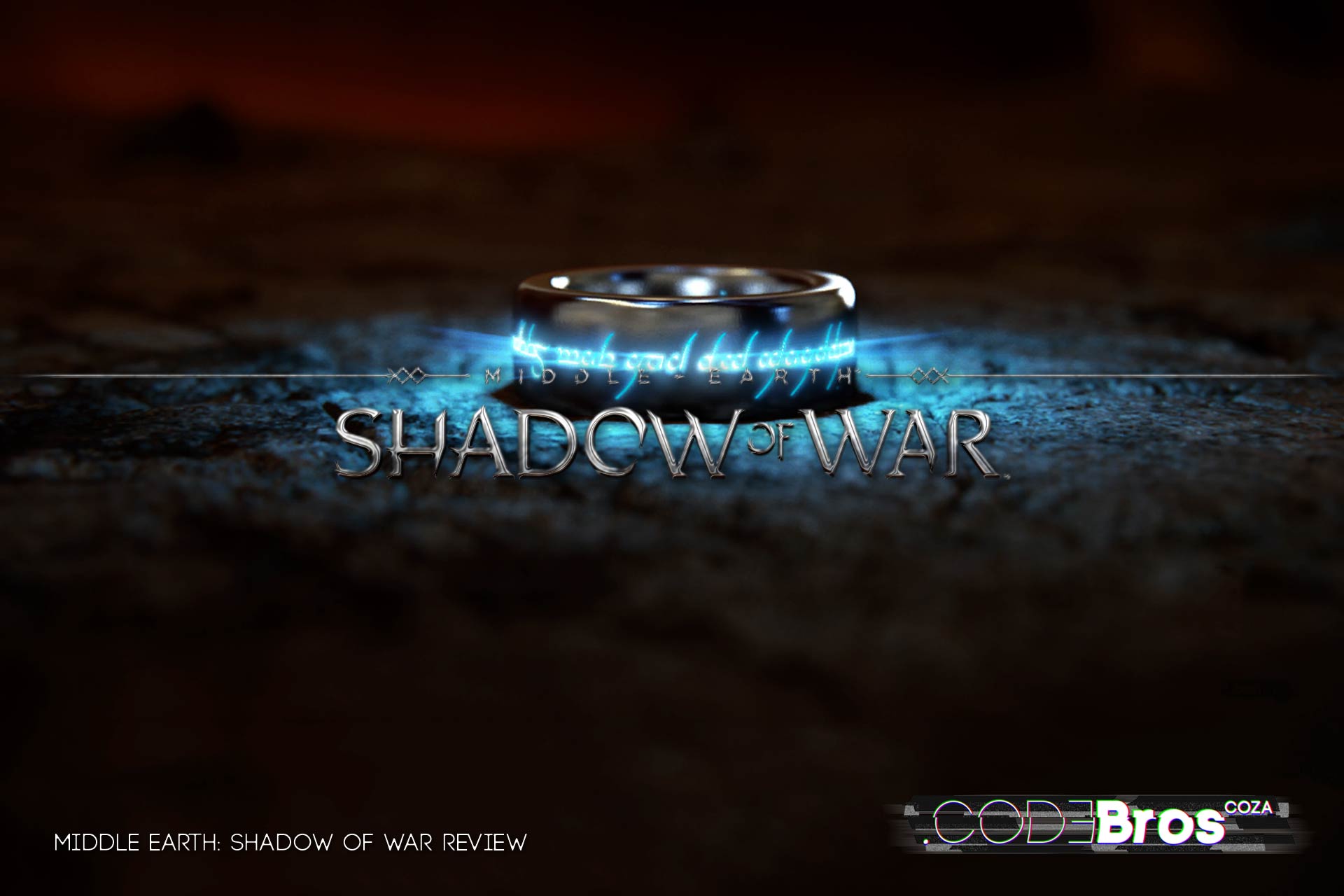Middle Earth: Shadow of War Review
Sauron’s armies gain strength as his rise nears, and now Minas Ithil is under attack by the armies of the Witch-King. With the assistance of Shelob and her visions, you forge an army of your own to defeat the Witch-King and forge a new ring of power, free of Sauron’s corruption, to destroy him once and for all.
Middle Earth: Shadow of War is the sequel to Monolith Productions’s hit success “Middle Earth: Shadow of Mordor” that was released in 2014. The new action role-playing game has been released as of 12 October 2017 for Microsoft Windows, PlayStation 4, and Xbox One. The game has introduced a few new features and systems, including micro-transactions and loot boxes, which received some backlash, although isn’t all that bad in my opinion. You can choose to ignore that part of the game and it won’t affect your experience whatsoever. Shadow of War is the result of Monolith’s learning curve in Shadow of Mordor, saying “this was our ambition to do the big, blockbuster version of the ideas we’d begun to explore in the first game.” Their aim was to replicate the epic battles shown in the Lord of the Rings films and allow the player to experience it in this game, and it has succeeded in doing so in my opinion.
Forges of Doom

The story continues on from Shadow of Mordor, following Talion who is still fused with the elven wraith, Celebrimbor. The game starts with where the two have traveled to Mt. Doom, where they forge a new Ring of Power that is free of Sauron’s corruption. Upon completion, an explosion that eminates from the ring seperates Celebrimbor from Talion temporarily. Talion is drawn to a voice, where he finds that Shelob, who changes from her Spider-form into a human-form, is holding Celebrimbor hostage. She strikes a deal with Talion to free Celebrimbor in exchange of the New Ring, to which Talion reluctantly agrees. Shelob uses the ring to look into the future and see the fate of Middle Earth. She directs Talion to the last Gondorian stronghold in Mordor, Minas Ithil, which is currently under siege by an army of Sauron’s Uruk, to gain possession of a Palantir, a magical Seeing-stone that allows you to see anything you wish, which would be a dangerous weapon in the hands of Sauron.
Talion travels to Minas Ithil and comes to odds with Celebrimbor, because of the loss of the New Ring. Talion insists that this is the way that needs to be followed for now in order to save his people, while Celebrimbor believes the city is already lost and that the Palantir’s safe keeping is to take priority. Talion meets up with the city’s defenders: General Castamir, his daughter Idril, and Lieutenant Baranor. Together they work to stave off the Orcish army. Talion ends up relying heavily on Shelob and her visions, in order to save the city and find the location of the Palantir. Unfortunately, certain events occur that causes the fall of Minas Ithil. The Witch-King and his Nazgul have taken up residence there. After the retrieval of the New Ring, Shelob grants Talion one last vision before he departs and tells him to raise his own army, which becomes the basis upon which the game is built in order for you to take back Minas Ithil and take down Sauron.
Quirky Alliances

I enjoyed Shadow of Mordor, but as was mentioned before, the first game was merely a starting platform for Monolith’s intentions, and I applaud Monolith for the success of a “learning platform” game that has spawned the creation of their “blockbuster” creation. This game plays on and brings a lot of the uncommonly-known lore of Middle Earth to the surface, even bringing new perspectives to the lore. Not many people might know that Shelob is a primordial spider, and offspring of another dark primordial named Ungoliant, which makes sense why she would be able to take on a human form, though she and her mother prefer their Spidery appearances. She existed even before Sauron, and a little of this is hinted even in the game. Throughout the game, it is shown that she has “chosen” you to enact her vengeance upon Sauron, as she claims early on that you both have a common enemy, though she has a major distrust of Celebrimbor, the reason being revealed in the game. Aside from that, when you are able to Dominate Orcs and recruit them into your army, there are many strange, fun, and hilarious Uruk and Olog-Hais that you encounter.
Dominating Orcs replaces the mechanic of them merely becoming an obedient soldier, but actually makes that they can develop a sense of loyalty to Talion. When dominating Captains, you get the choice of Recruiting them into your army, Fighting them to the death, or Shaming them – I generally preferred Recruiting, because most of the Captains had impressive traits. Depending on circumstances or your actions, they can become more antagonistic towards him, and even betray him and go back to Sauron’s army. The secret mechanics feel realistic, and I tested them thoroughly. Without spoiling too much, all I will advise is that you should take care of your followers and much as possible. Save them from harm when necessary, fight alongside them, and don’t let your other followers see that you leave the others to die. Although there is one case that had me majorly confused. I dominated a Captain, and then 10 minutes later, he comes back to me, with one of my other loyal Captains, and slices his throat, declaring that he is sick and tired of my orders, when the only order I gave him was to Retreat back to Base. I rescued my victimised follower, and killed the Betrayer. The Uruk that I saved has been very loyal as a result, possibly from seeing what happens to traitors and also reinforcing his trust in his new Master since I saved his life. Perhaps the traitor was severely temperamental, which is a shame, because he had very little weaknesses that made him a valuable asset. It’s funny how you end up favoring certain Orcs to others because of their personalities or because of what you’ve been through together.

Another such example, when dominating an Orc, was when I decided to test out the Shaming option. There was even an Achievement/Trophy, called “Everything Is Permitted”, for doing this to an Assassin class Uruk, so once I found my target in the Army menu, I went ahead on my mission to Shame him until he became Deranged. There are guides on doing this for some reason, I mean, I was fortunate enough to not need the Skill Improvement called “Worse Than Death” which apparently helps in this endeavour. I only needed to Shame poor “Gubu the Torch” twice before he became “Gubu the Ruined”. At first I wasn’t quite sure what had happened to him, as the Shamed Orcs disappear after being Shamed, but only when I caught up to him later, to Recruit a different Olog Captain into my Army who had plans on executing Gubu, did I see what had happened to him. Derangement completely robs the Orcs of their ability to form cohesive words, causing them to regress to infant speech. I nearly fell to the floor laughing at good ol’ Gubu, uttering nonsense as though he is having a real conversation with Ar-Pratu Pain Lover. Out of pity, I saved Gubu and Recruited him into my army, and later proceeded to capture Cirith Ungol with him at my side. For everything I had put him through, I even considered making him Overlord, though I first want to increase his level before I do that, since Shaming reduces the Orc’s level significantly. How well does a Deranged Overlord do at Commanding a Fort? Result: Pending (Will update soon)
World of Nemeses
A lot of what I have mentioned above is all part of the new “Nemesis System” that has been put in place in Shadow of War, and there’s still more. Along with Recruiting dominated Orcs into your army, you can send a dominated Captain to become a Spy under one of the Warchiefs, where they will pass on intel of their target to Talion, and when the Warchief is killed, the Spy can even take the Warchief’s place under the Overlord. Killing the Warchiefs will weaken the Fort’s defenses, which is a huge recommendation! In the pursuit of recruiting and killing Captains, you will notice that not only do the Uruk and Ologs have their respective classes, but also unique Tribe types, of which there are seven. Some will even have elemental attributes, awarding them with titles such as Poisonous Dark Tank, or Fiery Machine Assassin. The details about each of these unique class and tribe combinations get revealed when you interrogate Worms, to uncover the strengths and weaknesses of said Captain, so I won’t spoil it for you here. By the time I was ready to capture the Region’s Fort, I had recruited most of the Captains and killed all of the Warchiefs, weakening the Fort to it’s utmost and having a staunch attack team, and being able to apply Offensive Bonuses, like adding Shields to a group of Orcs or choosing Poisonous Siege Beasts over Flame Siege Beasts. The moment you’ve captured the Fort, you will be given additional missions that serve as training for your current Captains that will even yield rewards for Talion, such as a Skill Point, Currency, or Gems.

There is one Fort in every Region, of which there are five, which is three more than in Shadow of Mordor, and each Region is significantly larger than the two we had in the previous game. Along with unlocking Training Missions, you unlock the ability to attack other player’s Forts online through “Online Conquest” Missions. The player isn’t visible, but you have to pit your attack force from the Region you own, against the defending forces of another player’s Fort. As you imagine, much fun can be had in this once you’ve captured all the regions in your world’s game to move on to the outside World. Vendetta missions are still a thing, like when an Orcish footsoldier or Captain kills you and gets a promotion, you are tasked with the option of going after them and taking vengeance, though it isn’t limited to just your world now. If another player gets killed in their world, you will randomly get an Online Vendetta mission pop up somewhere in your Region map, giving you the option to enact revenge on an enemy Orc on behalf of another player. Naturally, you gain rewards for doing both the Online Conquest and Vendetta missions, mainly points rewarded that will be used to gain Spoils of War Chests. The game has gone on a more appropriate RPG-style route, with the inclusion of gaining and equiping gear, of which there are 6 types of equipment that can be gained, namely; Sword, Dagger, Ranged, Armor, Cloak, and Ring, under rarities ranging from Common to Legendary, as well as being able to add a buff to each of these pieces of equipment with Gems that can be picked up in Regions by killing Orcs with a special icon over them, and forging better gems from the ones you have picked up. The Skill Tree has also been given a nice overhaul, and somehow feels easier to manage. There’s even a free-to-play mobile game that can be found on the Android and Apple Stores that plays as an RTS from a top-down perspective, where you can recruit characters from both Middle Earth games, as well as characters from the Lord of the Rings film trilogy!
*In Memory Of Monolith’s Executive Producer, Michael David Forgey, who passed away on the 3rd of March 2016.*
[review]
Conclusion
Monolith Productions have outdone themselves with this release. Their aims were high and they nailed it, giving us a gripping story that fits in nicely between The Hobbit and The Lord of the Rings, and giving us huge and beautiful worlds to explore. The visual variety per region is refreshing, and the graphical textures are done beautifully! I was a bit disappointed in some of the clipping that occurred with some equipment pieces, and hair, but it’s not game-breaking. And the controls are easy to understand, despite there being many facets to learn! Every ability and how to use them gets introduced so gradually that you don’t feel overwhelmed when you have to try it out in the midst of all the others. The amount of freedom you have in the game is amazing. I would not recommend this to younger ages though, as the violence is pretty intense, and the Age Rating is for Mature audiences as per the ESRB. The story may be linear, but your actions in the world are completely up to you. See a graug minding it’s own business? In the mood to troll the Orc camp a few meters away? Well, dominate that graug and go wreck havoc! Or continue on your way to the next mission. My next aim is to make all the captains in a region deranged, so I can laugh as they speak to each other in “graar”-speak. There’s a lot of hours that can be spent in this game, without hesitation. If the Orcish Trolling doesn’t bring you back for more, the Elven Wraith Acrobatics will. Either way, go get your own copy from BTGames for R555.00 on Windows and R825.00 on PlayStation 4 and XBox One.

